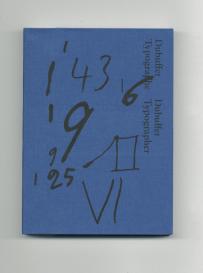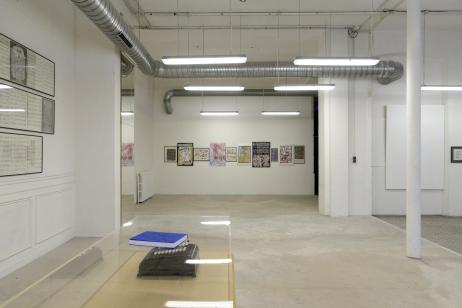
Pierre Leguillon
Dubuffet Typographe
Exhibition from 10 Dec to 13 Dec 2013
12 years and 2 months ago
During Lafayette Anticipations - Fondation d'entreprise Galeries Lafayette’s anticipation period, the majority of the artists in residence explored the Galeries Lafayette archives. Like Megan Rooney, and more recently Scott Myles, several of them seized upon the shop on the boulevard Haussmann as a subject and a broadcast space. The attraction the artists had for urban modernity, the great spectacle of sales, and the vibration of the present time is nothing new.
When he came back from Vence in 1961, Jean Dubuffet discovered Paris at the height of the Trente Glorieuses. The restlessness was far removed from the city he had left behind a decade before. The artist’s palette lightened, passing from earthy brown to bright colours and clear lines, opening the “Coucou Bazar” period to which the Musée des Arts Décoratifs, dedicated a very beautiful exhibition in 2013. In fascination at this overexcited Paris, the artist lingered in the Galeries Lafayette to chew over the countertops, reproduce the graphic art of the signs, impregnate himself with the energy of the crowd. He also produced a gouache on paper, soberly entitled “Galeries Lafayette”.
Pierre Leguillon put all of Jean Dubuffet’s typographical explorations in perspective in a book published at the end of 2013. This publication, presented under the banner of Lafayette Anticipations, was augmented with a documentary in which the artist decrypts the notebooks, letters, posters and invitations created by the painter.
The impressions of the drawings of Galeries Lafayette recalled, from the outset, how much the shop has fascinated creative types across the century, auguring well for possible collaborations to come.
"DUBUFFET TYPOGRAPHE"
For fifteen years, Pierre Leguillon has worked on “re-activiating” major art works of the 20th century that he considers paralysed in the shackles of history. Artist, curator, teacher, photographer and critic, he is himself one and several authors. This decoupling of his personality is only ever resolved in a single object: the book. This ancient form of communication is the most likely to support genesis, the development and the emancipation of a creation, in a unique space and experience.
“A proposition that emanates from me (…) wants, that everything in the world exists to end up in a book” wrote Mallarmé in his “Divagations”. This ambition to put the world in a book resides, today, in an icon called Google, a synthesis of a digital religion structured in a new language and whose only function is to increase the degree of the organisation of information. The particularity of a book, which just like a search engine, fits in the sphere of the useful, is to introduce no technological rupture to its subject. It’s in this dialectic that the work of Pierre Leguillon on Jean Dubuffet fits. This represents a pretext for dealing with the future of writing at a time when digital is delegitimising the manuscript. Travelling between public and private archives, in particular those of the Dubuffet Foundation in Paris, Leguillon collected a variety of ephemera: catalogues, artist books, notebooks, language books, posters, invitations and even record sleeves. These images were arranged to produce a sort of anti-manual containing successive fictional families of subjects, vocabularies, styles and codes. Dubuffet’s attention to manuscripts, to letter design, and up to the Arabic characters he copied ceaselessly, made him, in Pierre Leguillon’s eyes, the ultimate typographer.
Yet on closer inspection Dubuffet’s work consciously drew from the typographical characters and page layout used in commerce and advertising. His writing, untied from any informative quotient, resonates, ironically, with the Turing tests that today allow us to differentiate a human internet user from a piece of software. The “Prelinger Drawings” installation, also presented at Lafayette Anticipations - Fondation d'entreprise Galeries Lafayette, draws towards this same ambivalence between a message and its medium. The rectangular space built from printed fabrics, chosen for their shape and their origin (Nordic, African, French and Japanese fabrics) served as rooms for drawings and rubbings of books from the Prelinger Library in San Francisco. The private institution, which unites the encyclopaedic and vernacular memory of North American, supported the ambiguity of the origin of vernacular patterns and their potential power for transmission in Leguillon’s work. The installation generates its own form from the substance from archives and colours, openly posing the question of the ornament as a vehicle for thought.
Thanks: Fondation Dubuffet ; Fonds de dotation Famille Moulin ; Fondation Nationale des Arts Graphiques et Plastiques ; Le Cnap (aide à l’édition) ; Art 3 and (SIC) Éditions.
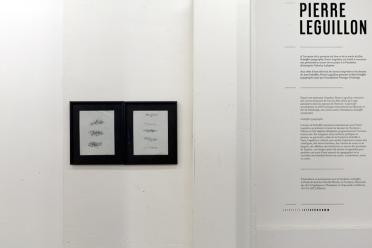
Pierre Leguillon, Dubuffet Typographe, December 11-14th 2013, Lafayette Anticipations, Paris
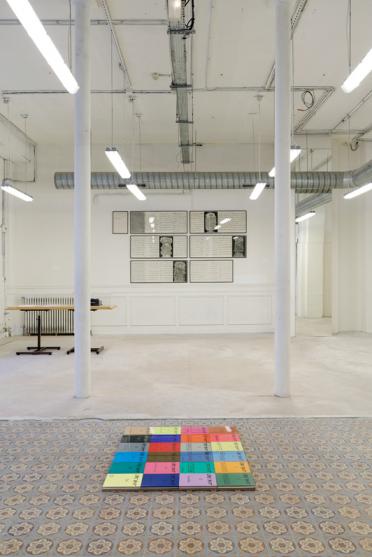
Pierre Leguillon, Dubuffet Typographe, December 11-14th 2013, Lafayette Anticipations, Paris
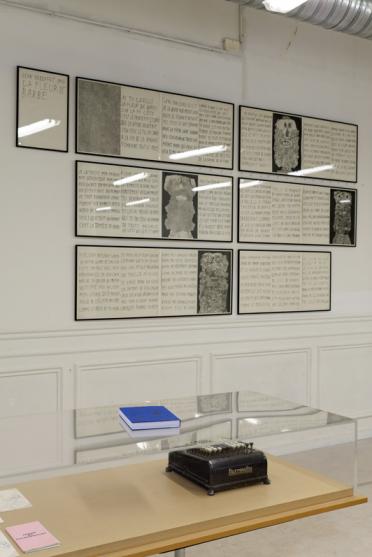
Pierre Leguillon, Dubuffet Typographe, December 11-14th 2013, Lafayette Anticipations, Paris
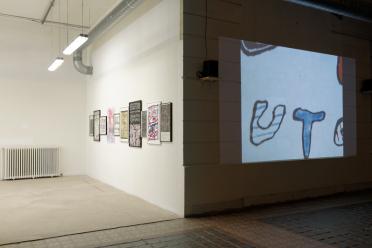
Pierre Leguillon, Dubuffet Typographe, December 11-14th 2013, Lafayette Anticipations, Paris
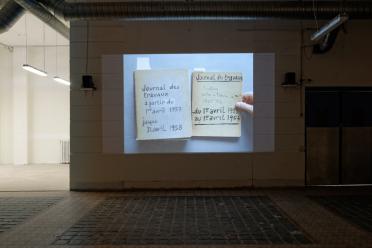
Pierre Leguillon, Dubuffet Typographe, December 11-14th 2013, Lafayette Anticipations, Paris
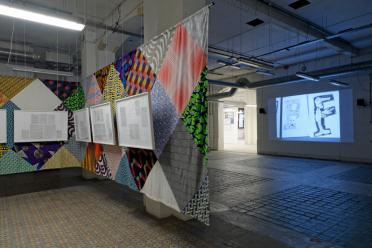
Pierre Leguillon, Dubuffet Typographe, December 11-14th 2013, Lafayette Anticipations, Paris
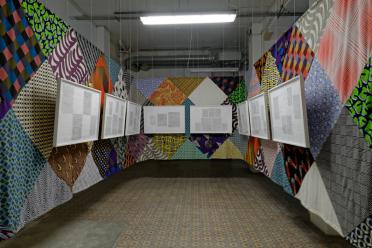
Pierre Leguillon, Dubuffet Typographe, December 11-14th 2013, Lafayette Anticipations, Paris

